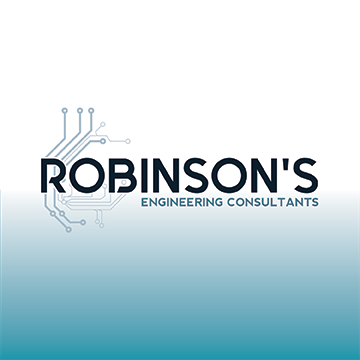- brett@rec.phxcoxmail.com
- 480-361-2539
Frequently Asked Questions
Want to find out more about EMI and EMC? Curious about the importance of grounding? The answers to the most common questions we get are right here.
Electromagnetic interference, EMI, is any undesirable electromagnetic emission or any electrical or electronic disturbance, man-made or natural, which causes an undesirable response, malfunction or degradation of the performance of electrical equipment it encompasses or in near proximity with.
Radio frequency interference, RFI, is any undesirable electrical energy with such content within a given frequency range. Conducted RFI is most often found in the lower frequency ranges 14 kHz to 30MHz. Radiated RFI is more often found from 30MHz to 3GHz.
EMI (electromagnetic interference) or RFI (Radio frequency Interference) propagates via conduction and or radiation over signal and power lines and throughout improperly grounded PCB’s, Shielded Cables, or Chassis Housings.
Typical sources of interference include switching power supplies, ac motors, and microprocessors. In reality, just about any electrical and or electronic device that has the potential to generate electromagnetic emissions.
Electrical Motors, Radar Systems, Electric Power Transmission, Radio & TV stations, Toaster Ovens, Microwave Ovens, Blue Tooth, Network Hub Antennas
Common mode interference, (also known as), asymmetrical interference, is an EM signal that is found in phase on both the line and neutral conductors with respect to ground. Note: Common mode noise typically has equal amplitude on both line and neutral conductors.
Differential mode interference, (also known as), symmetrical interference is an RF or EM signal which exists between the power line and neutral conductors.
EMI emissions are regulated by the FCC, Aerospace, Medical, Military, and Automotive industries to allow EM sensitive equipment to function properly without suffering any degradation or disruption in performance due to interference generated by other electronic devices nearby.
A) MIL-STD-461G & RTCA-DO-160G for Military & Aerospace
B) SAE, ENV, ISO, NASA, ARP, CISPRE, FCC,IEC, and CE Mark for Commercial, Industrial and Business Applications, which also include Automotive and Medical
EMI tests are performed in an anechoic chamber or open field, using inline passive networks called LISNs, (Line Impedance Stabilization Networks), connected in series with the power lines to the equipment. The LISN establishes a consistent impedance to allow for repeatability of test results. Conducted emissions are measured via an RF connection to a port on the LISN.
Note: Radiated emissions are measured using an antenna or current detecting near field probe.
Insertion loss is quite simply the effectiveness of an EMI filter to function within a given or predicted range of frequencies. It is important to know that all Capacitors are Frequency Respondent!
Insertion loss is defined as the ratio of voltages across a load without the filter inserted into the circuit. Filter performance is dependent on the input and output impedance seen by the capacitor, LC network, or PI filter and the insertion loss data is always predicted using a 50 Ohm load as a base.
While this provides a standard for comparison, it does not reflect the actual performance of the filter’s capabilities within an electronic system, especially since there are many other variables that have to be considered. When it comes to data cables, insertion loss in reality is more about line resistance displayed in graphic form.
Any electromagnetic energy which interrupts, obstructs, or otherwise degrades or limits the effective performance of electronic communications and their components. Radio frequency interference is energy that interferes with the operation of a device. The device itself or by other devices nearby may cause RFI.
Conducted emissions are the radio frequencies transmitted from an electrical device through a power cord and back into the adjacent electrical system. This is also known as reflected energy.
The vulnerability of a product to electromagnetic interference coupling, from external sources, that can travel through cable shield as an attachment (CS) or through the entire unit itself from a encompassing radiating RF source such as radar, or other electronic equipment within the area (RS).
Radiated Emission testing measures the electromagnetic interference emitted by an electrical / electronic device or cabling system under test.
A device, that intentionally generates, or emits, radio frequency energy by intent, in either radiation or conduction methods. This can include but not exclusive to: Cell phones, Radio Frequency transmitters, Data Center Transmission Devices, Cable testers, Hi-Pot testers, High Intensity Lasers, Medical MRI equipment, of which also includes Military or Commercial Swept Radar Systems.
A device that was not intended by design, to emit radio frequency energy, by either radiation or conduction, but none the less, generates radio frequency energy internally, or sends radio frequency signals to other equipment via connecting wires, or radiating sources.(Such as Data Centers)
Lightning, otherwise known as Sudden or Rapid Induced Transient Energy, is a sudden transient discharge or surge of electric potential that occurs naturally in the atmosphere. It is to be noted that this type of surge can be self-generated from other external sources within an electrical system, building or aircraft.
A ground is defined as an electrical connection to a mechanical or electrical chassis and earth. This ground can remove excess charge from a circuit and send it into the ground where it is effectively absorbed by the chassis. It is essential to know that a ground is not always a ground, especially when it comes to EMI, for example, all ACV, DCV, Analog, and Digital grounds do not “play” well with each other when improperly attached, even if the word ground is in their names.
-VDC, Chassis Ground tied to either Earth Ground or –VDC directly; all other grounds have to be tied to chassis via an LC Circuit (Wire Wound Inductor plus a Capacitor) or in the case of ACV green wires for safety they shall be tied to chassis via a Wire Wound Inductor, this way you get the ground reference but not the transient signals that are common in AC neutral attachment. See: MIL-STD-188-124B, MIL-STD-1310H and MIL-HDBK-419A.
Contact
Links List
© All rights reserved
Powered by Black Dove Digital

